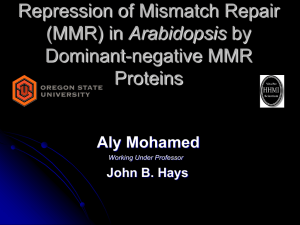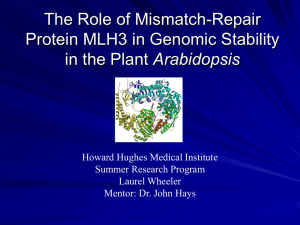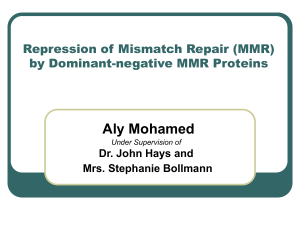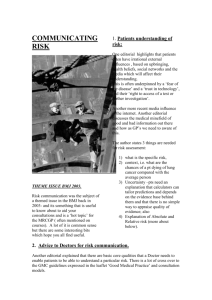Theoretical Analysis of Transport and Diffusion of Mismatch Repair
advertisement
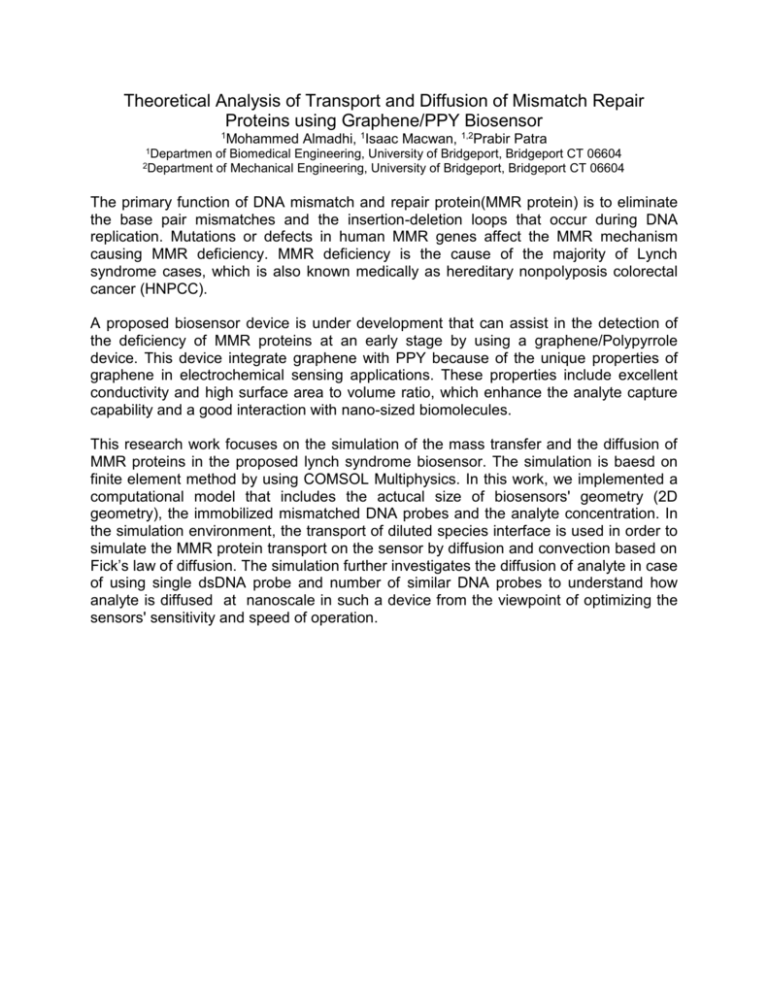
Theoretical Analysis of Transport and Diffusion of Mismatch Repair Proteins using Graphene/PPY Biosensor 1 1Departmen 2Department Mohammed Almadhi, 1Isaac Macwan, 1,2Prabir Patra of Biomedical Engineering, University of Bridgeport, Bridgeport CT 06604 of Mechanical Engineering, University of Bridgeport, Bridgeport CT 06604 The primary function of DNA mismatch and repair protein(MMR protein) is to eliminate the base pair mismatches and the insertion-deletion loops that occur during DNA replication. Mutations or defects in human MMR genes affect the MMR mechanism causing MMR deficiency. MMR deficiency is the cause of the majority of Lynch syndrome cases, which is also known medically as hereditary nonpolyposis colorectal cancer (HNPCC). A proposed biosensor device is under development that can assist in the detection of the deficiency of MMR proteins at an early stage by using a graphene/Polypyrrole device. This device integrate graphene with PPY because of the unique properties of graphene in electrochemical sensing applications. These properties include excellent conductivity and high surface area to volume ratio, which enhance the analyte capture capability and a good interaction with nano-sized biomolecules. This research work focuses on the simulation of the mass transfer and the diffusion of MMR proteins in the proposed lynch syndrome biosensor. The simulation is baesd on finite element method by using COMSOL Multiphysics. In this work, we implemented a computational model that includes the actucal size of biosensors' geometry (2D geometry), the immobilized mismatched DNA probes and the analyte concentration. In the simulation environment, the transport of diluted species interface is used in order to simulate the MMR protein transport on the sensor by diffusion and convection based on Fick’s law of diffusion. The simulation further investigates the diffusion of analyte in case of using single dsDNA probe and number of similar DNA probes to understand how analyte is diffused at nanoscale in such a device from the viewpoint of optimizing the sensors' sensitivity and speed of operation.



